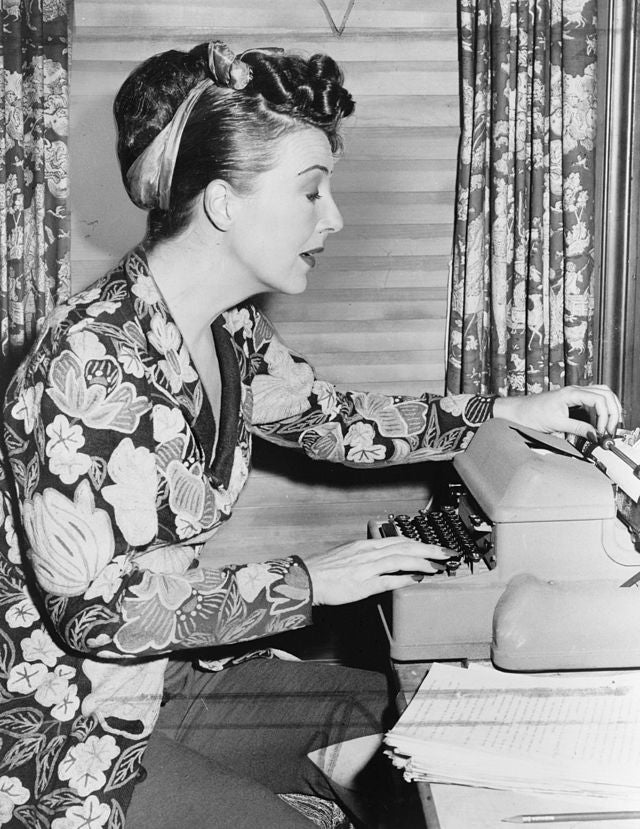Gypsy Rose Lee’s mother, Rose Hovick, married John Hovick married in 1910. Rose Hovick’s first daughter, Ellen June Hovick. was born in Seattle, Washington on January 8, 1911. When her sister was born in 1913, her mother gave her second daughter the name Ellen June. From that point onward, her older daughter would be known as Rose Louise Hovick.
Her mother Rose grew up in vaudeville, performing from the time she was twelve, and Rose and her younger sister, now known as June, began performing regularly at the ages of five and three respectively. June, known as Hollywood Baby, had caught the eye of Our Gang producer Hal Roach and for a time June had steady work and the three enjoyed a modicum of fame in Los Angeles.

Rose Hovick was a monstrous stage mother, as her daughter June later documented. She cast Gypsy Rose as the unattractive second fiddle to June, who could dance en pointe from the age f two. The two children were sacrificed to Rose Hovick’s manic, pathological ambitions. June later said that from the age of five on, “she never believed anything her mother said.”1. Taken out of school at the age of seven, Gypsy Rose would never complete grade school, much less high school. Rose Hovick “harassed and blackmailed both her daughters, demanding money and gifts,” and threatening them with physical violence. .”2
Although Gypsy Rose Lee showed little interest in show business, she developed an act called “Rose Louise and Her Hollywood Blondes, which provided her transition from the dying art of vaudeville into the less reputable business of burlesque. Gypsy Rose Lee’s act combined sex and comedy, quickly distinguishing her from the bump-and-grind circuit, where “customers masturbated beneath newspapers in their laps.”3. Later, Gypsy Rose Lee once told Mike Todd, producer and her lover, “I am not a stripper. A stripper is a woman who puts on a sex spectacle. My act is straight comedy.”4
Gypsy Rose debuted on Broadway in 1932 in Hot-Cha as Rose Louise and didn’t adopt the name Gypsy Rose Lee until the 1936 Ziegfeld Follies. After Ethel Merman left the show, Gypsy Rose starred in the Broadway production of DuBarry was a Lady. She also co-produced and starred in Mike Todd’s Star and Garter in 1952.1
Although Gypsy Rose Lee showed little interest in show business, she developed an act called “Rose Louise and Her Hollywood Blondes, which provided her transition from the dying art of vaudeville into the less reputable business of burlesque. Gypsy Rose Lee’s act combined sex and comedy, quickly distinguishing her from the bump-and-grind circuit, where “customers masturbated beneath newspapers in their laps.”2. Later, Gypsy Rose Lee once told Mike Todd, producer and her lover, “I am not a stripper. A stripper is a woman who puts on a sex spectacle. My act is straight comedy.”3
Gypsy Rose debuted on Broadway in 1932 in Hot-Cha as Rose Louise and didn’t adopt the name Gypsy Rose Lee until the 1936 Ziegfeld Follies. After Ethel Merman left the show, Gypsy Rose starred in the Broadway production of DuBarry was a Lady. She also co-produced and starred in Mike Todd’s Star and Garter in 1952.4
Gypsy Rose Lee was also an accomplished writer who in 1940 moved into an apartment in Brooklyn with a group of literary luminaries including George Davis, an openly gay friend from her burlesque days and fiction editor of Harper’s Bazaar, W.H. Auden, Carson McCullers, Benjamin Britten, and Chester Kallman.5 At 7 Middagh Street, Gypsy Rose Lee penned a smart, campy novel based on her experiences in burlesque called The G-String Murders, later made into a film titled Lady of Burlesque, starring Barbara Stanwyck. She wrote a less successful follow-up novel in 1942, Mother Finds a Body. Lee also wrote a play starring Joan Blondell, The Naked Genius, about a burlesque performer.
In the late 1940s, Gypsy Rose Lee’s quick wit was making her a popular guest on radio and television quiz shows. In early 1950, she was offered a more permanent gig as host of What Makes You Tick?, a program scheduled to expand from 15 to 30 minutes when she took over later that fall.6 Because of the blacklist, What Makes You Tick? was cancelled in October 1950.
Gypsy Rose Lee’s most enduring success was Gypsy: A Memoir, which was made into the popular musical, Gypsy, in 1958. A film adaptation followed in 1962.
She was married three times. To Arnold Mizzy on August 25, 1937; to William Alexander Kirkland in 1942; and to artist Julio de Diego in 1948. She had one son, Erik Lee Preminger, with director Otto Preminger, in 1944.
Gypsy Rose Lee died of lung cancer in Los Angeles in 1970.
- 1Karen Abbott, American Rose: A Nation Laid Bare, New York: Random House, 2010, 31.
- 2“Kathrine K. Beck, “Lee, Gypsy Rose,” History Link.org, April 8, 2004.
- 3Karen Abbott, American Rose: A Nation Laid Bare, New York: Random House, 2010, 31.
- 4Karen Abbott, American Rose: A Nation Laid Bare, New York: Random House, 2010, 31.
- 5Rachel Shteir, “Everybody Slept Here,” New York Times, November10, 1996, 71.
- 6“Gypsy Claims Past Bare of Red Tint,” Pittsburgh Free Press, September 12, 1950.
Film
You Can't Have Everything (1937)
Ali Baba Goes to Town (1937)
Sally, Irene and Mary (1938)
Battle of Broadway (1938)
My Lucky Star (1938)
Stage Door Canteen (1943)
Belle of the Yukon (1944
Babes in Bagdad (1952)
Screaming Mimi (1958)
Wind Across the Everglades (1958)
The Stripper (1963)
The Trouble with Angels (1966)
Television
Think Fast (1949)
The Gypsy Rose Lee Show (1958)
Who Has Seen the Wind? (1965)
Gypsy (1965-1967)
The Pruitts of Southampton (1966)
Batman (1966)
Around the World of Mike Todd (1967)
The Over-the-Hill Gang (1969)
Novels
The G-String Murders (New York: Simon & Schuster, 1941).
Mother Finds a Body (New York: Simon & Schuster, 1942).
Memoir
Gypsy: A Memoir (New York: Harper & Bros., 1957)
Plays
The Naked Genius (1943)